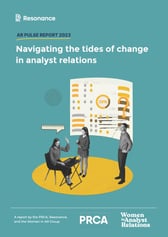November 2020 was not your average month of news. Even by the standards of a news cycle that increasingly changes faster than headlines can be written, this was a month when the UK media was consumed by some of the most pivotal events of our time.
COVID-19, of course, continued to dominate, with article after article probing the impact of the second national lockdown, plans for family visits at Christmas and glimmers of hope of a vaccine – along with everything in between. No matter their patch, no matter their target audience, an angle for a COVID-19 story (particularly a new one) will always be of interest to a journalist.
Then there was the US Presidential Election. Generally, US elections viewed from this side of the Atlantic see a huge spike in media interest in the immediate run-up to Election Day in the first week of November, dropping off the morning after when a winner is confirmed. Not this year. A vote already billed as once in a generation took on a new life on election night, with razor-thin margins in battleground states dragging out the final result as counts continued. Even when US networks called the election for Joe Biden on 7 November (4 days later), weeks of unsubstantiated claims of election fraud from the defeated President Donald Trump have followed – all providing ample fodder for UK journalists fascinated by the UK’s future relationship with a Biden presidency.
And finally, Brexit has loomed its head again. The continued failure of the UK and EU to agree on a trade deal has forced journalists to reckon with the possibility that, when the UK’s transition period from the EU ends on 31 December, it could be with no deal in place – leading to a reversion to trading on World Trade Organisation terms. Cue a frenzy of coverage exploring everything from the politics of the moment, to discussions of the impact of such an outcome with business leaders, and of course a stream of vox pops to capture the public mood.
PR in Peak News
When faced with this dauntingly crowded news agenda, PR can seem like an impossible task. How can you possibly make your client’s voice heard in a media environment when era-defining events constantly suck up journalists’ attention?
Here are some tried and tested PR strategies to help you survive and thrive in these unprecedented times:
- Newsjack, newsjack, and newsjack again
This should already be a critical tool in any PR professional’s arsenal, but in times like these, newsjacks are more important than ever. With journalists moving at pace to keep up with events that change by the minute, you need to be agile too. If you wait for a story to be covered widely by the big nationals or trade publications it is already too late. Instead, try excellent tools like Google Alerts, RSS feeds, and even Twitter to catch a story early.
As journalists look to get their heads around an unprecedented moment of history, think about how your client can contribute to the conversation. Does it have some data to shed light on an issue? Can you work with an in-house expert from your client to add a new perspective for a journalist’s article? We managed that with our client NTT DATA UK in November, sharing an expert comment on COVID-19’s impact on health technology to coincide with a report from Vodafone – in the process securing coverage in Computer Weekly.
2. A campaign for the momentThe right campaign can find huge resonance in the media in times such as these. Whether it is a piece of research to capture the mood of UK consumers or a publicity drive for a new offering from a client, there are plenty of scopes (if pitched effectively to tie into stories journalists are interested in) for such a campaign to be successful. This approach has borne fruit for NTT DATA UK recently. We worked with it on a piece of analysis of NHS data on mental health-related fit notes during lockdown – the story was covered on page 4 of The Independent on Sunday.
3. Capture the headlines
Finally, of course, there are still opportunities to break through the deluge of COVID-19, US elections, and Brexit for your clients to drive the news agenda. Resonance’s research earlier this year found that trade publications, B2B technology, in particular, devoted the vast majority of their coverage to non-COVID-19 stories. This gives PR professionals, especially those working in the B2B space, an ideal chance to help their clients communicate beyond this succession of crises. Instead, clients can start to speak to the broad array of issues being wrestled with by target decision-makers, helping them plan for 2021 and beyond.
This strategy delivered excellent results recently for our client Ensono. We helped it secure significant interest in B2B technology publications for its latest SAP research. Journalists were fascinated by the rich data points showcasing the difficulties the SAP skills shortage is creating for the migration of SAP portfolios to the cloud – vital new insights for IT decision-makers wrestling with this critical industry debate. In the end, we secured pieces in a range of top-tier outlets including diginomica, Computer Weekly and BetaNews.
Moving forward
These strategies are not intended to be used in isolation. Rather each approach can be adapted and moulded into your broader PR plan to suit a client’s individual needs. The best agencies stay agile, testing the waters of the media and defining the best approach to help a client achieve its goals in a month – and indeed an era – of peak news.



 "The intricacies of the data-driven landscape is written into the DNA of Resonance. We are built for the data economy."
"The intricacies of the data-driven landscape is written into the DNA of Resonance. We are built for the data economy.".jpeg?width=250&height=181&name=AdobeStock_565367297%20(1).jpeg)
 "In Tech PR we have a front row seat to the changing technology landscape. From Generative AI to Quantum, it's our job to insert our clients' voices into the narrative"
"In Tech PR we have a front row seat to the changing technology landscape. From Generative AI to Quantum, it's our job to insert our clients' voices into the narrative"



 "In a world where the only constant is change, how do tech brands stay one step ahead of the market? That's where Resonance comes in"
"In a world where the only constant is change, how do tech brands stay one step ahead of the market? That's where Resonance comes in".png?width=219&height=219&name=Seb%20Moss%20wavelength%20thumbnail%20(1).png)

 "Resonance is a group of technology, business and communications experts"
"Resonance is a group of technology, business and communications experts"


